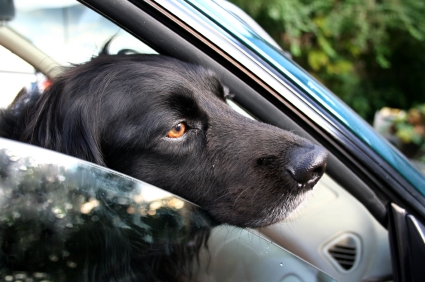 Here in Wisconsin, spring had finally sprung, and warm weather is just around the corner…or so we hope—as little as two weeks ago, parts of Wisconsin were receiving 9 inches of snow, and as recently as last night, temperatures were still dipping below the freezing point. Maybe that’s why an article about heat, specifically the accumulation of heat, caught my attention while I was browsing the scientific literature recently.
Here in Wisconsin, spring had finally sprung, and warm weather is just around the corner…or so we hope—as little as two weeks ago, parts of Wisconsin were receiving 9 inches of snow, and as recently as last night, temperatures were still dipping below the freezing point. Maybe that’s why an article about heat, specifically the accumulation of heat, caught my attention while I was browsing the scientific literature recently.
Everyone knows that the internal temperature of a parked car can be significantly hotter than the external air temperature, especially on a sunny day. However, authors of a recent article in Forensic Science International quantified that temperature difference under various conditions and presented a mathematical model to predict temperature variations in a parked car based on solar radiation, vehicle orientation with respect to the sun, external air temperature and other factors (1).
Dadour et al. tested their model by comparing their predicted temperatures to temperatures measured in vehicles parked in the Australian summer sun. Temperatures within the car’s cabin and trunk were measured every 15 minutes for up to 4 weeks. The authors conducted these experiments for two reasons: to help increase the accuracy of time-of-death estimations in forensic cases where victims are discovered in enclosed vehicles and to investigate the danger of leaving children or pets in a vehicle in the hot sun.
The authors described their mathematical model of heat gain as a simple greenhouse model, but the reality is far more complex. I will spare you the calculations, which involved a lot of sines, cosines, thermal exchange rates and Greek symbols. Suffice it to say that their model was able to predict temperatures inside of a car to within 1°C.
The results were quite striking. Temperatures in the car’s cabin and trunk spiked rapidly during the day, with cabin temperatures rising 20–30°C over the ambient temperature in only a few hours. Daytime cabin temperatures were as high as 70°C. For readers who are more familiar with temperatures expressed in degrees Fahrenheit, 70°C is equivalent to 158°F. [It’s no wonder that many of us have painful memories of burning the backs of our legs when getting into a hot car with vinyl seats.]
Cabin and trunk temperatures dropped to ambient temperature at night, only to rise again the next morning. Lowering the driver’s window by 2.5cm or 5cm had minimal effect, reducing the cabin temperature by only 3°C and 6–7°C, respectively. Such a small reduction in temperature would be little consolation to a child or pet left in a hot car.
The authors also examined the effect of car color by using both white and black cars with white or black roofs. Both the empirical data and mathematical model showed that the temperature inside of a black car was approximately 5°C higher than that in an otherwise identical white car, which should come as no surprise to those of us who own black cars. Roof color had little effect: Cars with white roofs were only 1–5°C cooler than cars with black roofs.
Unfortunately, every summer we hear news stories about children or pets left in hot cars, often with tragic consequences. If you’re ever tempted to leave a loved one in a parked car while you dash into a store to run a quick errand, remember the temperatures observed in Dadour’s study. 70°C! 158°F! How would you fare under those conditions, even if only for 10 minutes?
Reference
1. Dadour, I.R., Almanjahie, I., Fowkes, N.D., Keady, G. and Vijayan, K. (2011). Temperature variations in a parked vehicle. Forensic Sci. Int. 207, 205–11. PMID: 21067876
